Membership trials can be great for many reasons. For one thing, they help to entice customers who want to see what your membership is like before they make a purchase.
As for marketing, they can be a great way to generate leads. But when it comes to a free trial vs. paid trial, which one is best for your membership site?
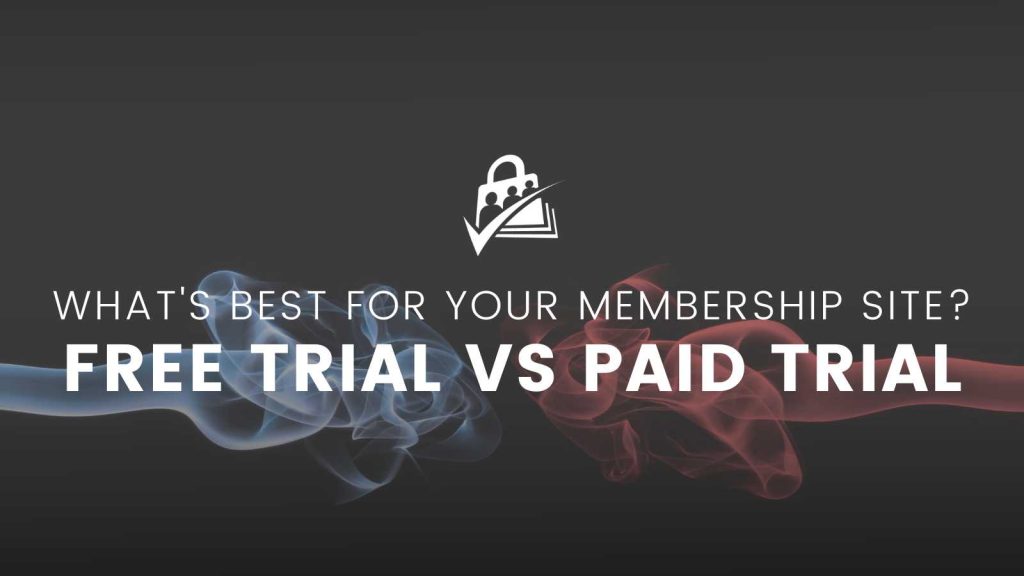
What is the Difference Between a Free Trial vs. Paid Trial?
A free trial gives potential members access to your membership for a limited time—for free. In a paid trial, potential members get access to your membership for a small fee and for a limited time.
Both free and paid trials are viable options, but one might work better than another when it comes to certain audiences. Before you choose the option you want to use, it’s important to compare the pros and cons of each.
With Paid Memberships Pro, you can use Add Ons to:
- Offer a one-time trial to members
- Remove trials from existing member offers
- Require delayed subscription payment following a limited time trial
- Provide a 30-day free trial to an annual payment plan
Benefits of a Free Trial
Many popular companies use free trials for their subscription services. You’ve probably used a free trial yourself! Just think about companies like Netflix, Hulu, Amazon Prime, and Peloton, which all offer free trials.
Some free trials are totally free for a limited time, while others are free for a subscription delay. With the latter, typically a credit card is required and billing begins automatically after the trial period ends.
A free trial can be a great way to market your membership, among other things. Let’s take a look at the key benefits of free trials:
They Bring Increased Exposure
The main benefit of a free trial is increased exposure. Free trials allow you to cast a wider net and catch a larger group of potential customers than you would with a paid trial.
When something is free, it encourages interested parties to give it a try. It’s also possible that people who wouldn’t typically look at your offers are more likely to try your service.
Generally speaking, most customers appreciate the opportunity to try something out before they buy it, and free membership trials are a great way to allow them to do that.
They’re Easy to Implement and Market
Creating a free trial period is pretty simple to accomplish with most membership plugins. Because you’re offering the full membership for free for a limited time, potential customers can immediately see the value.
This is especially true if you create materials to walk them through what the membership offers before they join.
Once you set up your free trial, sharing about it on social media and in your newsletter will bring in a lot of interested members.
They Provide Helpful Data
Not everyone who signs up for a free trial will continue using your service—but even those who don’t are an excellent source of information.
Poll or survey the people who don’t stay post trial to ask them about their experience and why they decided not to continue. You can learn a lot from them, and use that information to improve the value of future offers.
They Build Brand Trust
Building brand trust can be difficult when your potential customers don’t have that much experience with your products or services.
However, a free trial allows potential members to experience your membership first-hand. This allows them to verify that your sales page and marketing materials tell the truth about the value that your membership offers.
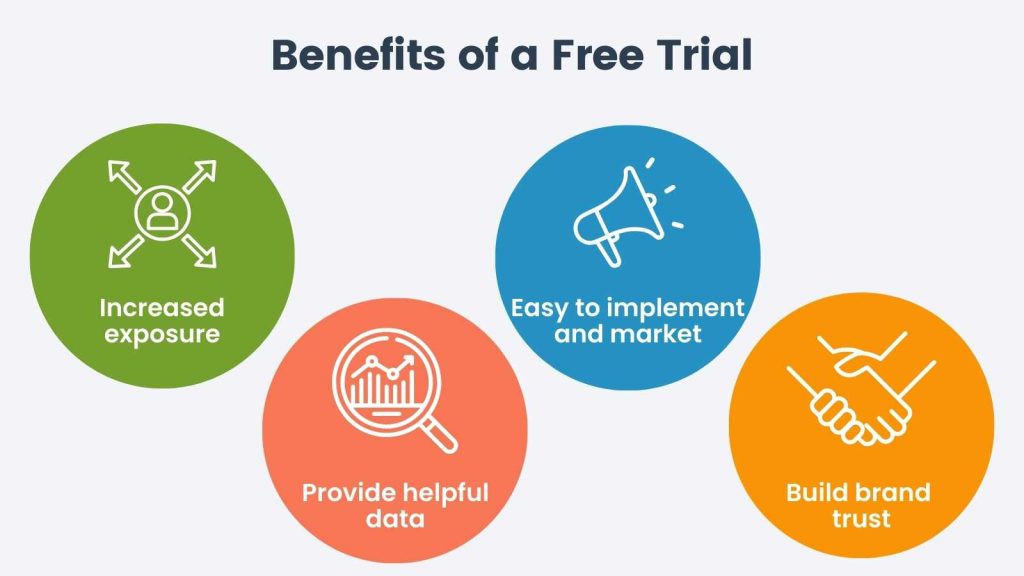
Limitations of a Free Trial
It’s easy to see why so many companies use free trials. But there are also drawbacks to offering your membership for free, even if it’s only for a short time.
Potential for Lower Conversion Rates
Even though potential customers like to experience a trial membership before purchasing, some members sign up without the intention of making a purchase.
Some customers sign up and make it a point to consume as much content as possible before the trial period ends. And when that happens, there’s not much incentive for them to move past the free trial and actually subscribe.
Having a large backlog of content for trial members to consume and a short trial period can combat this issue.
Increased Risk of Trial Abuse
When something is free, it can bring in leads that have no intention of actually making a purchase. Most memberships and subscriptions prevent users from signing up for a free trial with the same email address more than once.
But there’s nothing that can stop users from signing up for multiple free trials with different email addresses. While only a minority of users will do this, it’s still a problem.
They Can Lower the Perceived Value of Your Membership
You’ve put a lot of time and hard work into building a membership. It’s likely worth more than the membership fee, and it grows in value as you consistently add new content and make updates to meet your members’ needs.
When potential customers see the phrase “free trial,” they may not see that value. The free price tag can trick your customers into thinking that what you’re offering is just another free thing on the internet.
They may not see the value in investing or even give your membership the attention it deserves to recognize what you have to offer.
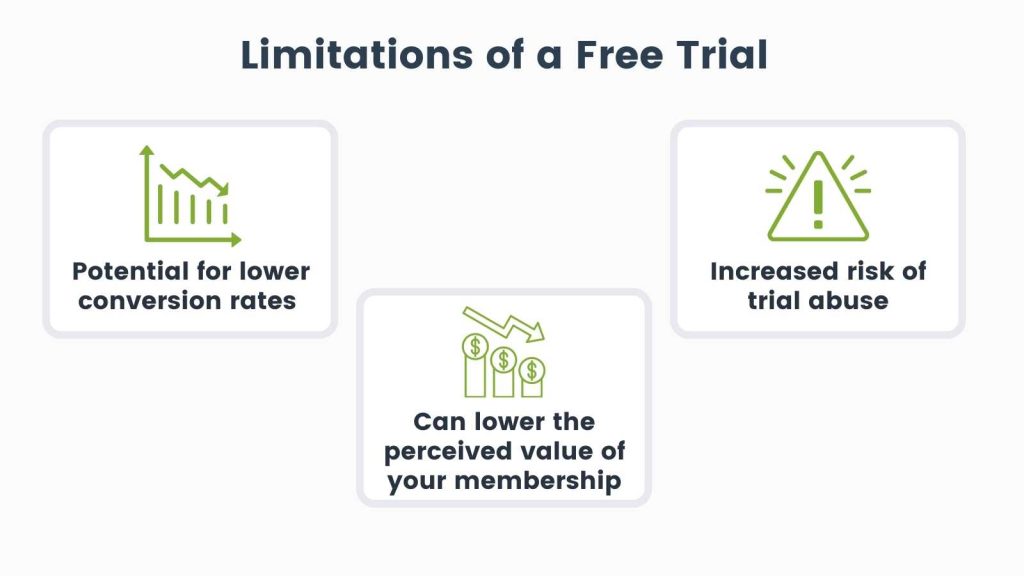
Benefits of a Paid Trial
Even though free trials can bring in a lot of leads, paid trials have their benefits too. If you’re looking for a trial membership option that will still help you earn money, it’s time to look into paid trials.
Increased Customer Engagement
When customers pay, they’re more invested in the membership. While free trials may see a lot more signups, they aren’t always engaged in the membership.
With a paid trial, your customers invest something in trying out your membership—and they’re more likely to actively consume the content and take part in any discussions. So, even though there may be fewer trial membership signups with a paid trial, those who do sign up tend to be more interested in what you offer.
Filters Low-Quality Leads
A big issue with free trials is that so many people, even those who never intend to buy the membership, sign up. But with a paid trial, you filter out those who are just seeking free offers.
Because paid trial users are more likely to become long-term members, they’re a better overall customer for your business. They stick around and keep paying, and you don’t have to market to new audiences because you retain your customers continually.
A bonus is that loyal customers are also likely to advocate for your brand and share your offerings with their network. So you get a customer and free advertising—all in one.
Grows Revenue
Creating a membership takes time and energy away from your other projects, and it can be challenging to give away trial memberships when you created the membership to earn revenue.
With a paid trial, you’re still earning income from the trial period, which can help you keep running your business smoothly. If your membership content has a high cost to create, it can be a great way to generate leads without losing money.
Protection from Trial Abuse
With a paid trial, you don’t experience trial abuse like free trials. Even though paid trials are cheaper than full membership, they don’t have the issues that free trials do.
First, paid trial members are typically more interested and engaged in the offer. And second, paid trials don’t attract the same kind of leads as free trials. So those only looking for a free offer to exploit don’t often consider paid trials.
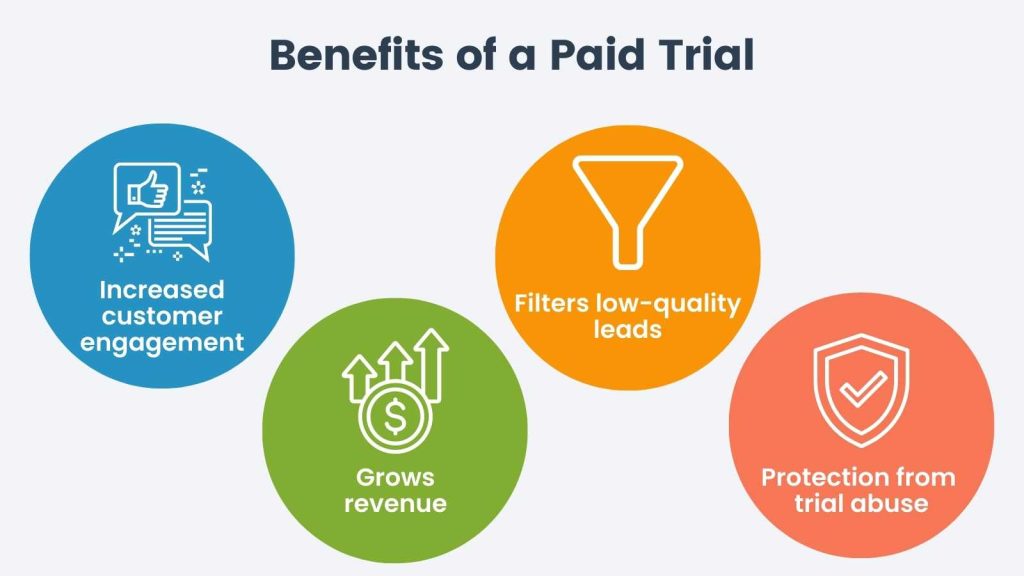
Limitations of a Paid Trial
Although there are benefits to using a paid trial, they aren’t always as easy to run as free trials. In addition to being less accessible than free trials, there are some limitations of paid trials.
Need for Strategic Planning
For various reasons, a paid trial requires more strategic planning than a free trial. Because you won’t generate as many leads as a free trial, more marketing and advertising will be necessary
to get customers to join your paid trial. You’ll also need to consider your audience and the appropriate trial length and cost for them.
Higher Acquisition Cost
Because paid trials generate fewer leads, your cost per lead will be higher than with a free trial. That isn’t necessarily bad, especially if you find better leads. But it’s something to remember, especially as you set your marketing budget.
It’s also worth noting that it may take longer to get new leads, so there’s also a time cost.
Greater Difficulty to Sell
Because you generate fewer leads with a paid trial, selling can be more challenging. Many people feel overrun with subscriptions these days, and some don’t want to add another recurring cost, even if it’s just for a trial period.
Plus, paid trials require a level of commitment early on that free trials don’t. It can be intimidating for some customers.
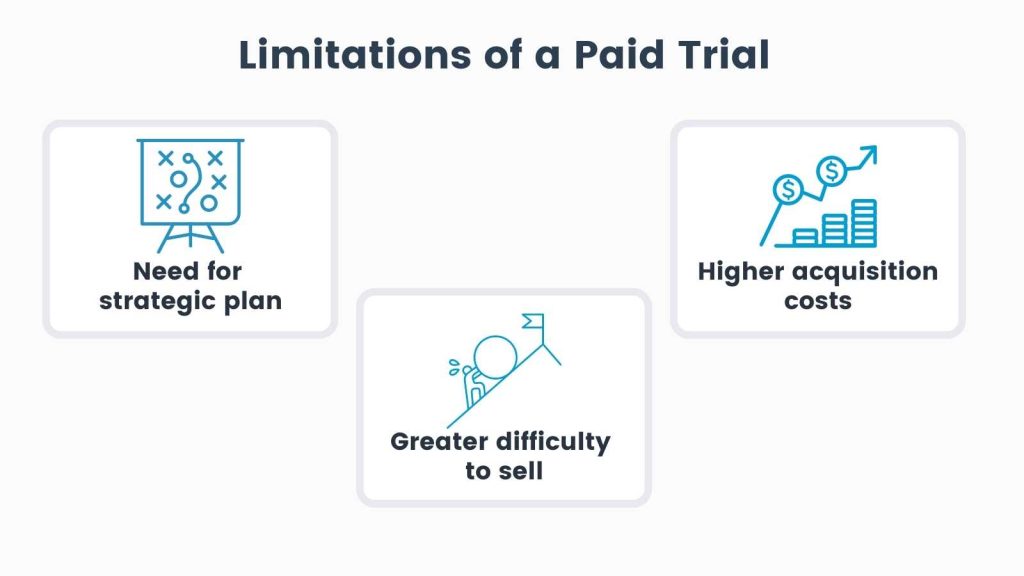
How to Choose the Right Option
When it comes to a free trial vs. paid trial, which is better for your business? The answer is that it depends, but there are some important things to consider when deciding. This list will help you determine which trial option is right for you.
- Understand your audience. What works for one business won’t work for another, and your audience is as unique as your business. Understanding your audience’s demographics and how they spend their money will help determine if a paid or free trial is best for you.
- Consider monetary product value. Not every membership should have a free trial. In fact, if you’re offering a high-value membership, free trials may not be possible with the cost you’ll incur.
- Determine goals. Depending on the membership and what stage of business you’re in, you may be looking for a larger marketing reach than conversions. Setting goals before you choose a trial option will help you determine which trial will work for you.
- Test both options. There’s no harm in offering a free trial to existing newsletter subscribers and past customers before you roll out a paid trial. It will allow you to try both options while also rewarding your subscribers and customers.
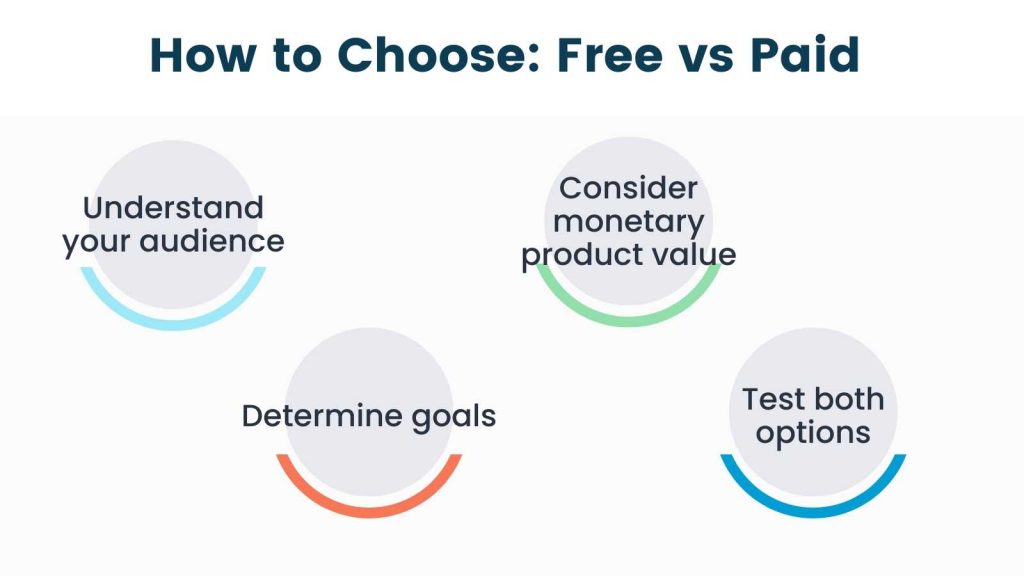
Create the Membership Trial That Fits Your Needs
There’s a lot to consider when choosing a membership trial option. This post discussed the pros and cons of a free trial vs. paid trial, but the essential things to consider are your business and what will work for your audience.
No matter how your membership changes and grows, Paid Memberships Pro has the membership plans and pricing to accommodate you. Sign up today and build a flexible membership site that works with your business.


